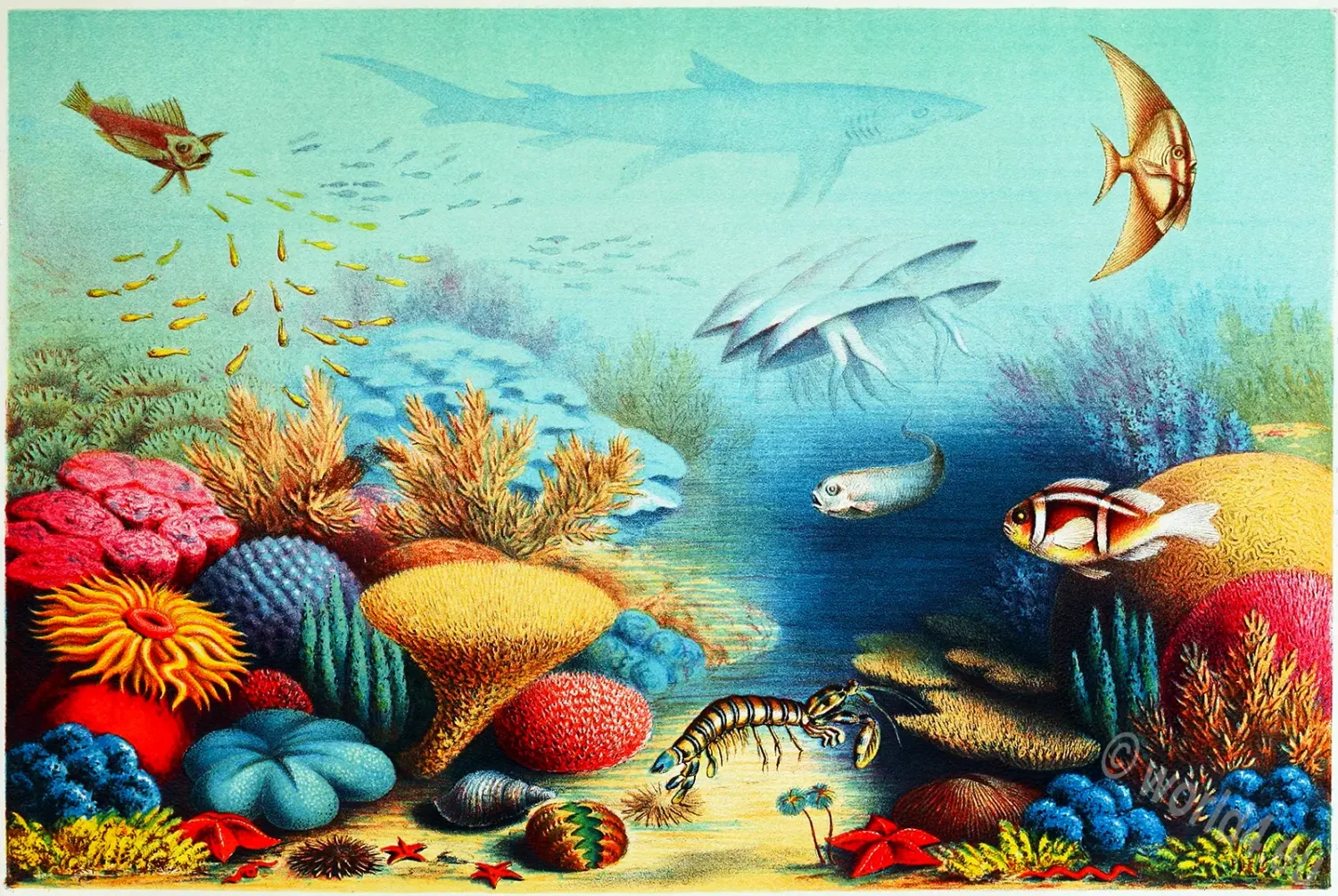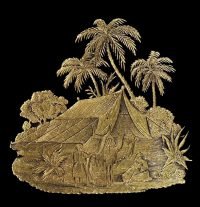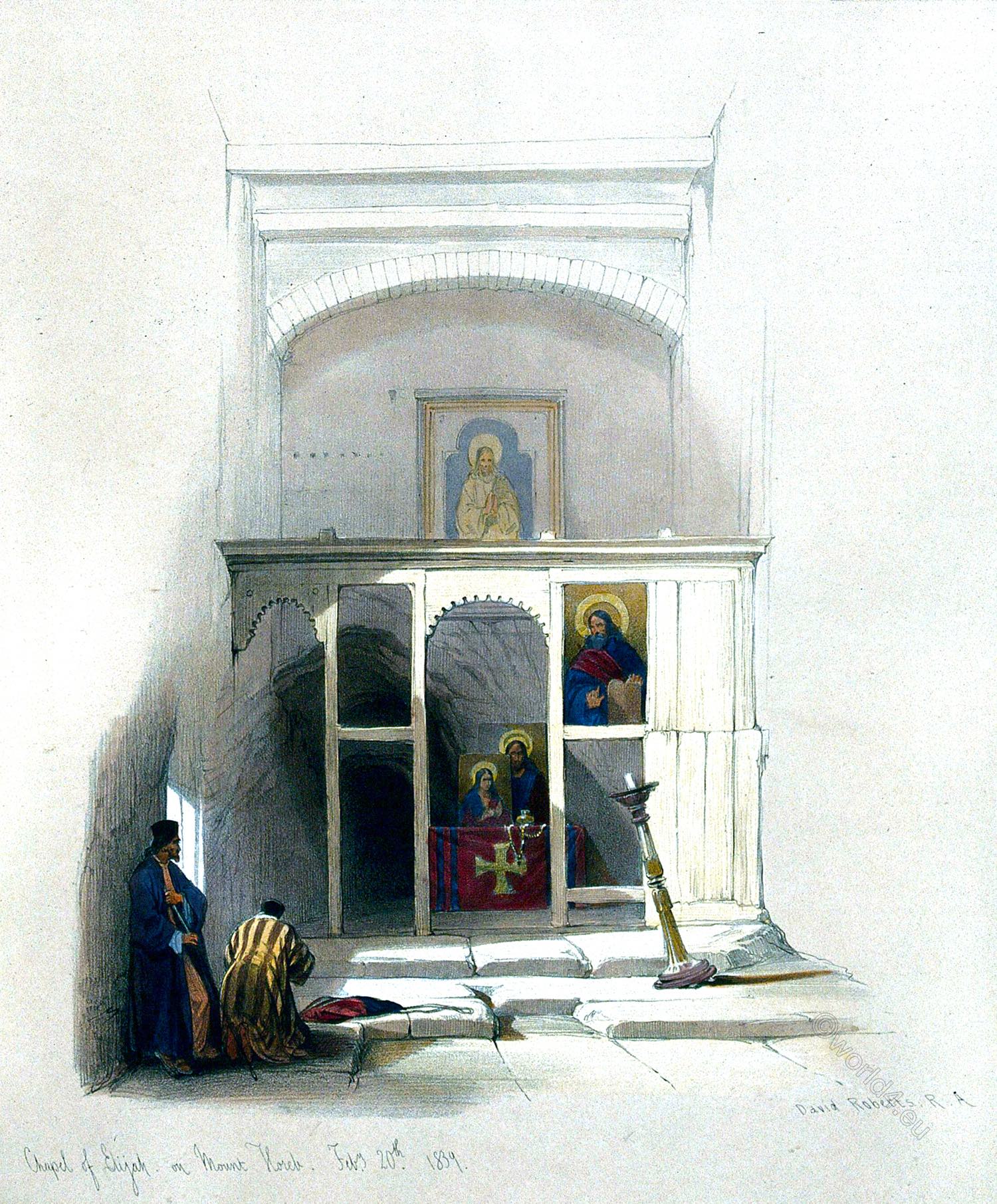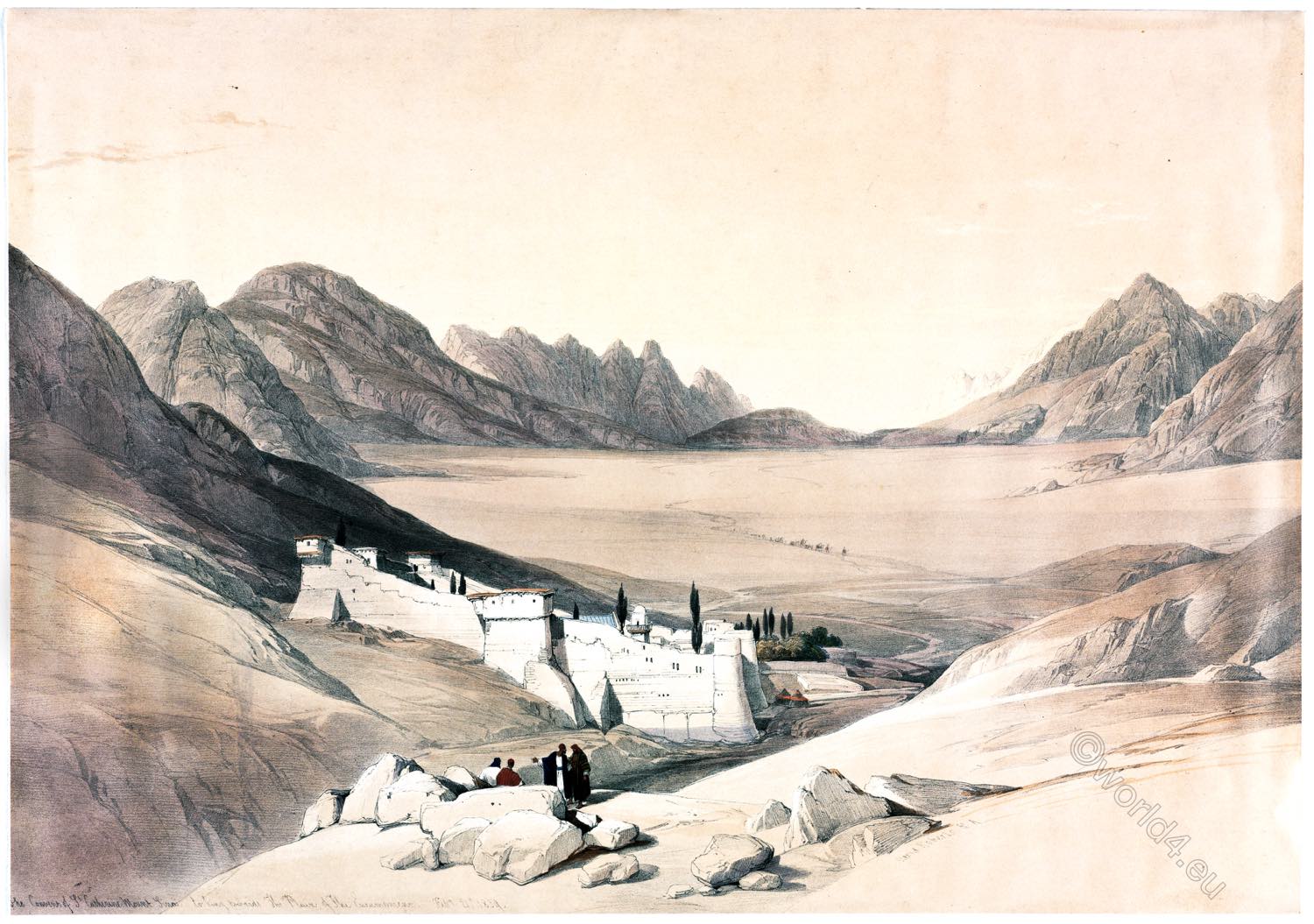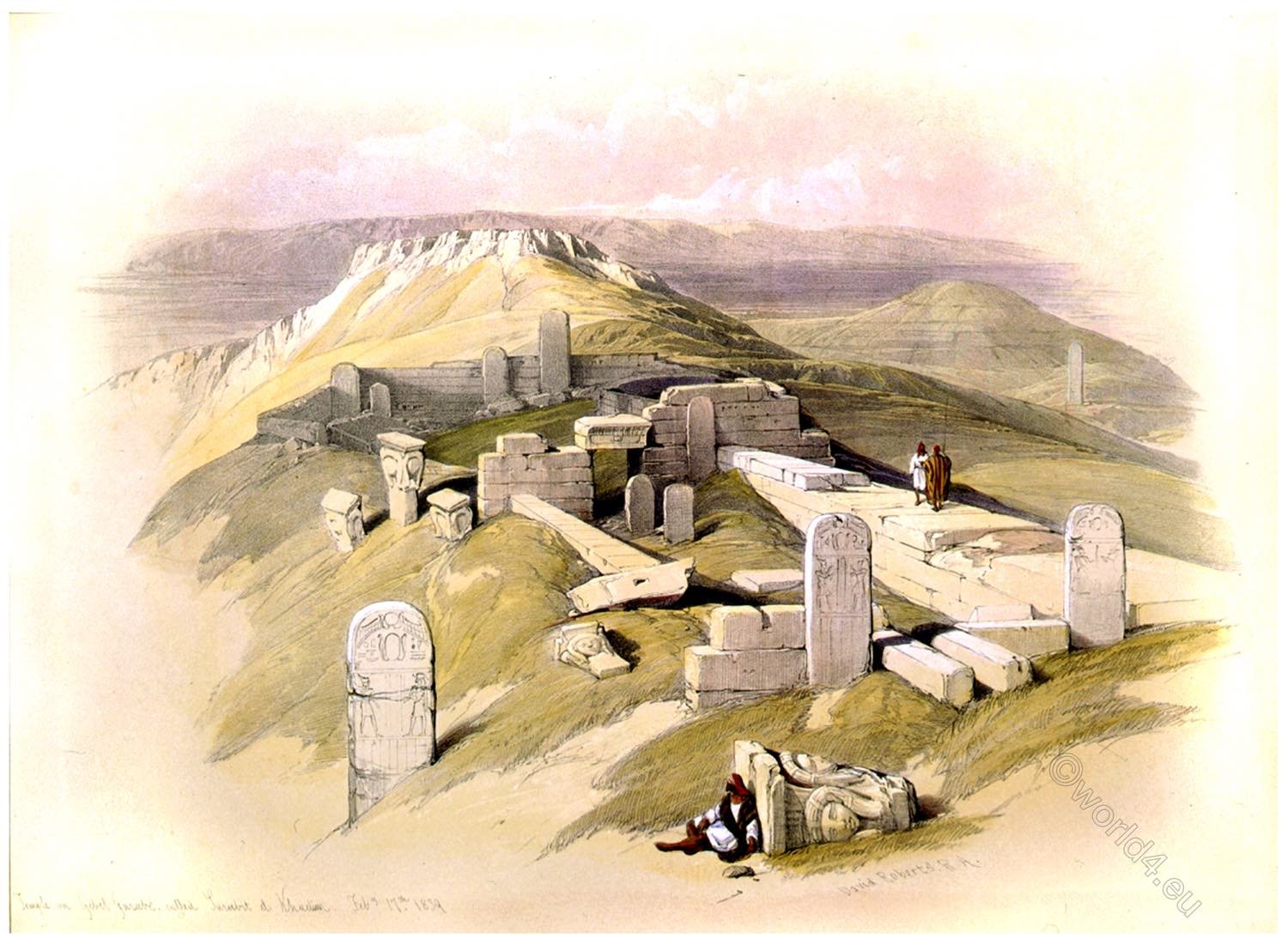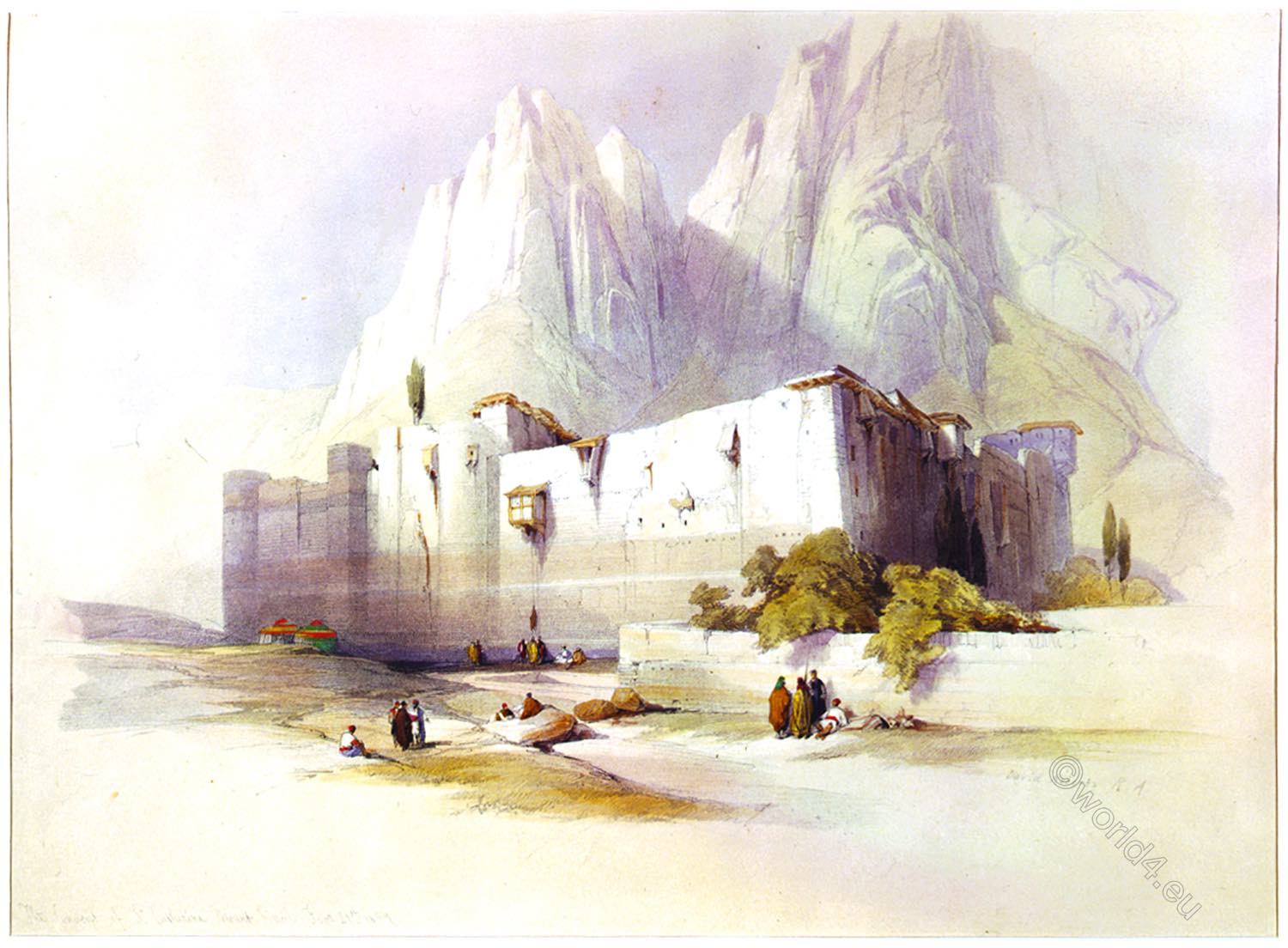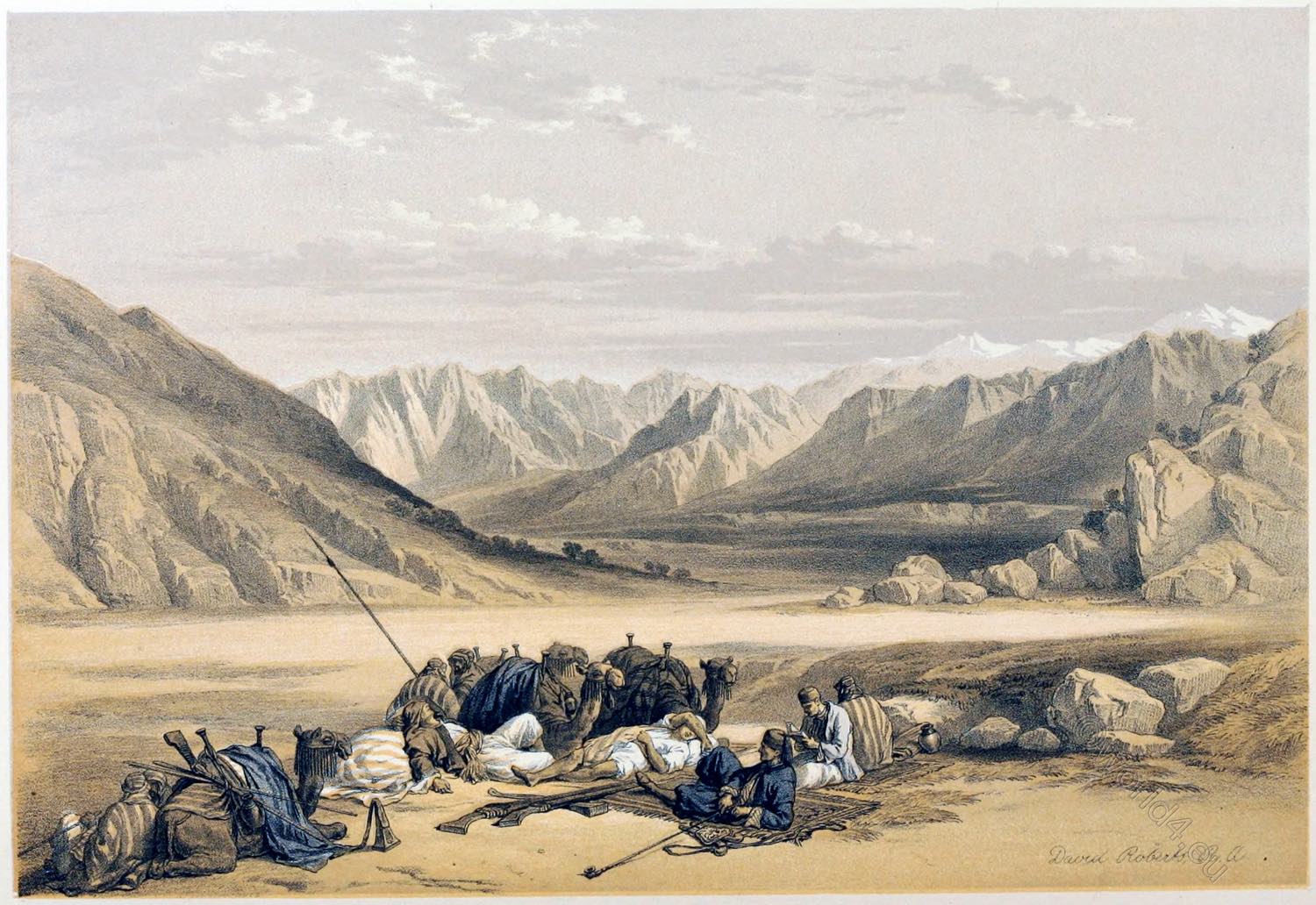This panel is intended to give an approximate picture of the splendor of color and the colorful animal life of an Arabian coral reef near El Tor.
The view of the narrow gorge, which leads out into the open sea between two low banks of a coral reef, is depicted in such a way that the viewer turns his back to the coast and looks out into the dark blue sea to the right in front of the center of the picture.
In this sketch, I have made a special effort to capture to some extent the unforgettable impression and in particular the wonderful light effect that I myself enjoyed when diving underwater and during the submarine hike through such a coral canyon near El Tor.
Of course, no brush or paint is capable of faithfully depicting the incomparable blue and green shimmer of the crystal-clear water and the delightful colorfulness of the colorful coral groups and the diverse sea creatures living on them near El Tor. But I hope that my imperfect sketch will at least give you a rough idea of the peculiar splendor of these magical undersea palaces.
At the same time, I have combined a large number of coral forms (some of which live at different depths) that are mainly characteristic of the Red Sea on the bank shown here. The main coral forms are labeled with Arabic numerals, the other animals with Roman numerals. This sketch does not claim to be zoologically accurate.
Coral reef at El Tor of the Red Sea in the Sinai
by Ernst Haeckel.
Coral forms
At the very bottom of the foreground, both on the lower right and lower left, the ground is covered with a blue, delicate umbellate coral (Xenia, Fig. 1) and a yellow moss coral (Anthelia, Fig. 2) growing in low turfs.
Above it on the lower left is a colossal, strongly inflated, scarlet sea anemone or actinia, with a dense crown of simple golden-yellow tentacles (Anemonia, Fig. 12) and directly above it a mighty group of crimson organ corals (Tubipora, Fig. 14); on the right between the latter two is a purple, almost spherical honeycomb coral (Favia, Fig. 13) with densely packed calyxes.
In front of this rises a delicate, gelatinous, blue-green colored poplar coral (Ammothea, Fig. 4), a bush of about eight slender, pyramidal sticks connected at the bottom, comparable to a dwarf-like group of poplars or cypresses.
Below it on the left is a large, likewise gelatinous soft alcyonaria stick of greenish-blue color, which looks like a flat cap mushroom split into several rounded lobes; this is the peculiar flesh mushroom coral (Sarcopliylum, Fig. 11).
It could be mistaken for a large actinia, a huge individual; in reality, however, it is a fleshy coral stick enclosing many thousands of very small individuals (protruding like bright dots). To the right of the Sarcophytum and the Ammothea, a very elegant, brownish-yellow stick of an ostrich coral (Heteropora, Fig. 10) rises up on a delicate base; it almost has the shape of a round table.
To the right at the foot of the latter is the red stick of a pore coral (Porites, Fig. 9); its densely packed branches are regularly forked; another stick of the same species is partially visible further to the left (directly above the flesh fungus coral, 11).
Further to the right, directly next to the circular table top of the ostrich coral (10), a purple sun coral (Astraca, Fig. 8) shimmers through indistinctly in the background and to the right of it a labyrinth coral (Coeloria elegans, Fig. 7).
More to the left, directly above the Strauss coral (10) and the honeycomb coral (13), the bushy shrubs of another yellow-brown bush coral (Madrepora, II, Fig. 15) rise up and behind them the extensive sky-blue masses of a mighty fissured pore coral shimmer through (Pontes, Fig. 17).
Above this, at the very top in the background, the purple, torn crests of a purple hill coral are still visible (Monticularia, Fig. 18). At the very left edge of the picture, in the middle, directly above the red organ coral (14), the thin plates of the light bluish-green fire coral rise several times above each other, like the leaves of a fan, with multiple incised edges at the top (Millepora, Fig. 16).
If we now turn to the small group of corals on the right side of the picture, the first thing we notice is a colossal hemispherical, dark yellow meander coral, the largest of the corals depicted here, with its many twisted surface (Maecandrina, Fig. 20). Immediately in front of it on the right is the large, almost spherical bubble of a purple-red, very densely branched stylet coral (Stylopliora, Fig. 21); and in front of this again a brown, loosely branched type of bush coral with coarse, finger-shaped branches (Madrepora, Fig. 3).
To the left of this is a stalk of the blue-green poplar coral (Ammothea, Fig. 4). Further to the left, the flat, spread-out umbrellas of a flat, pale yellow ostrich coral (Heleropora, Fig. fi) grow in several tiers on top of each other. Below these is one of the largest solitary coral individuals, a huge reddish-brown mushroom coral (Fungia, Fig. 5).
To the right are two blue bushes of the delicate umbellate coral (Xenia, Fig. 1) and below them the yellow turfs of the moss coral (Anthelia, Fig. 2). In the middle of the right side, above the large yellow meander coral (20), the Erica-like bushes of an irregularly branched and serrated bouquet coral of a splendid violet-blue color (Heteropora, Fig. 19) rise up.
If we now turn to the small group of corals on the right-hand side of the picture, we first notice a colossal hemispherical, dark yellow meander coral with its many twisted surface (Maenndrilia, Fig. 20) as the largest of the corals shown here. Immediately in front of it on the right is the large, almost spherical pale of a purple-red, very densely branched stylet coral {Stylopliora, Fig. 21); and in front of this again a brown, loosely branched type of bush coral with coarse, finger-shaped branches (Madrepora, Fig. 3).
To the left of this is a stalk of the blue-green poplar coral (Ammothea, Fig. 4). Further to the left, the flatly spread umbrellas of a flat, pale yellow Strauss coral (Heleropora, Fig. fi) grow in several tiers on top of each other.
Among these is one of the largest solitary coral individuals, a huge reddish-brown mushroom coral (Fungia, Fig. 5). To the right are two blue bushes of the delicate umbellate coral (Xenia, Fig. 1) and below them the yellow turfs of the moss coral (AntheUa, Fig. 2).
In the middle of the right side, above the large yellow meander coral (20), the Erica-like bushes of an irregularly branched and serrated bouquet coral of a splendid violet-blue color (Heteropora, Fig. 19) rise up.
Sea animals on the coral reefs of El Tor
Of the numerous animals of different classes that live on the coral reefs of El Tor, only a small selection of characteristic forms are shown in our picture.
Down in the middle of the gorge, between the right and left drop-off of the coral reef, a yellow, blue-black ringed grasshopper crab (Squilla, Fig. IV) hovers above the yellow sand road between the two.
Below it on the left is a young giant clam (Tridacna, Fig. V); the emerald-green body of the mollusk shimmers through between the jagged edges of its two half-open shell valves.
Immediately to the left is a bluish, brown-banded triton snail (Tritonium, Fig. VII); above it are two small, five-rayed, red starfish (Echinaster, Fig. VI). A larger, also scarlet starfish crawls further to the left (Oreaster, Fig. II); and between the former and the latter a sea urchin (Acrocladia, Fig. VIII) shows its round body covered with thick piston-shaped spines. On the right-hand side of the picture, a coral-red jawworm (Eunice, I) is crawling on the bottom at the very front.
To the left is another large red, five-rayed starfish (Oreaster, II) and right next to it on the left (under the front part of the squilla) are two delicate brush worms (Sahella, Fig. III).
To the right of the center of the picture swims a group of half a dozen box jellyfish (Aurelia, Fig. XIII). The fish immediately below, which resembles a silver belt, is a silverfish (Trichiurus lepturus Torus, Fig. XIV).
A colorful banded fish (Pristipoma, Fig. XV) swims to the right. Above, in the left corner, a red dragonfish (Scorpaena, Fig. X) chases apart a whole school of small golden-yellow wrasses (Labrus).
In the upper right corner, however, the strange bronze shimmering half-moon fish (Platax, Fig. XII) slowly moves along. At the top center of the picture swims a huge grey human shark (Carcharias, Fig. XI).
For the sake of clarity, the names of the animals illustrated on Pl. III in numerical order (1-21 corals, I-XV other marine animals):
Coral reef at el Tor in the Red Sea
Corals
- umbellate coral, Xenia.
- moss coral, Anthelia.
- bush coral, Madrepora.
- poplar coral, Ammothea.
- mushroom coral, Fungia.
- ostrich coral, Heteropora.
- labyrinth coral, Coeloria.
- sun coral, Astraea.
- pore coral, Porites.
- ostrich coral, Heteropora.
- flesh mushroom coral, Sarcophytum.
- anemone coral, Actinia.
- honeycomb coral, Favia.
- organ coral, Tubipora.
- bush coral, Madrepora.
- fire coral, Millepora.
- pore coral, Porites.
- mound coral, Monticularia.
- ostrich coral, Heteropora.
- maeander coral, Maeandrina.
- stylet coral, Stylophora.
Marine animals of the coral reef
I. Pine wurra, Eunice.
II. Starfish, Oreaster.
III. brush worm, Sabella.
IV. Grasshopper, Squilla.
V. Giant clam, Tridacna.
VI. Starfish, Echinaster.
VII. Triton snail, Tritonium.
VIII. Sea urchin, Acrocladia.
IX. Wrasse, Labrus.
X. Dragonfish, Scorpaena.
XI. Shark, Carcharias.
XII. Half-moon fish, Platax.
XIII Ear jellyfish, Aurelia.
XIV. silverfish, Trichiurus.
XV. banded fish, Pristipoma.
System of corals. Arabian corals. Family tree corals
Source: Arabian corals: an excursion to the coral reefs of the Red Sea and a look at the life of coral animals. Popular lecture with scientific explanations by Ernst Heinrich Philipp August Haeckel. Berlin, Georg Reimer, 1876.
Discover more from World4 Costume Culture History
Subscribe to get the latest posts sent to your email.

